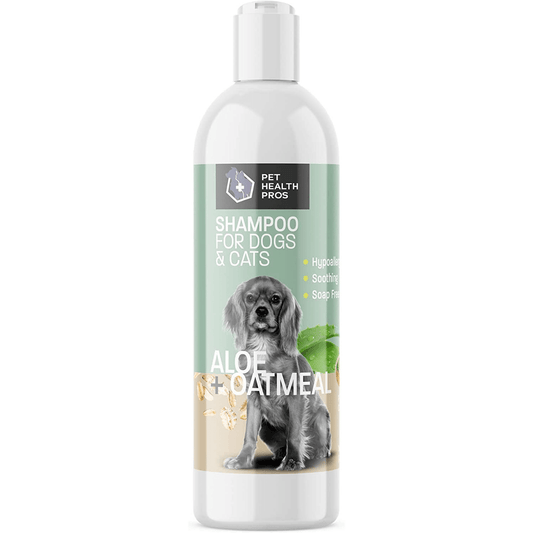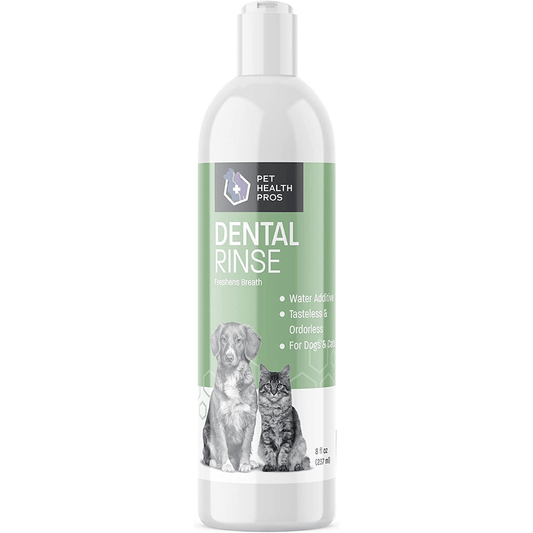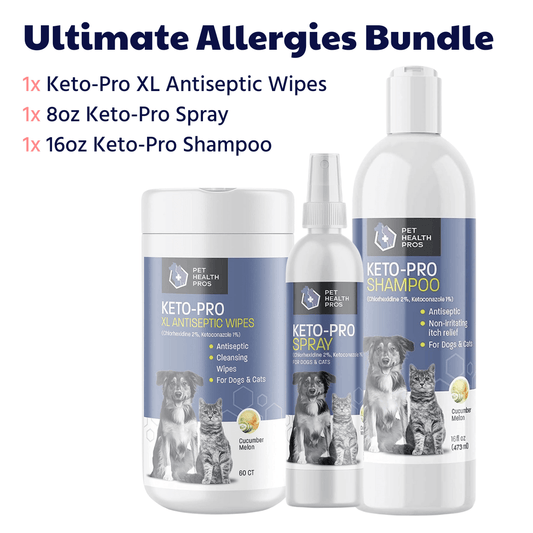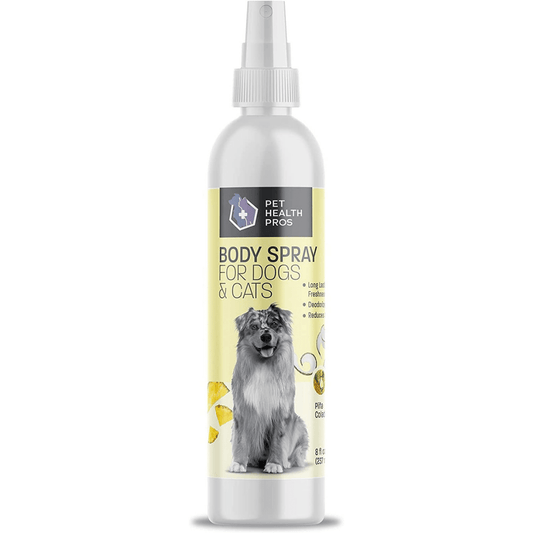Dog Chewing Repellent: Keeping Your Furniture Safe
Dog chewing behavior can be a common issue for pet owners, leading to damage to furniture and other household items. In this article, we will explore the use of dog chewing repellents as a solution to this problem. By understanding the natural instinct of dogs to chew, choosing the right repellent, and applying it effectively, you can protect your furniture and create a safe environment for your pets.
Key Takeaways
- Understanding the natural instinct of dogs to chew is essential for addressing problematic chewing behavior.
- Choosing a dog chewing repellent with safe and non-toxic ingredients is important for the health and safety of your pets.
- The effectiveness of dog chewing repellents on different surfaces can vary, so consider the specific needs of your home.
- Proper application techniques and consistent training are key to effectively using dog chewing repellents.
- Monitoring your pet's behavior and making adjustments to your strategies can lead to long-term success in preventing chewing damage.
Understanding Dog Chewing Behavior
Natural Instinct
Dogs have a natural instinct to chew, which stems from their ancestors' need to keep their teeth and jaws strong. Understanding this behavior is crucial in addressing problematic chewing. It's important to differentiate between normal chewing and destructive behavior. Causes of chewing can vary from teething in puppies to anxiety and boredom in adult dogs. Identifying the triggers for chewing is essential in finding a suitable solution.
| Chewing Behavior | Description |
|---|---|
| Normal Chewing | Healthy, non-destructive behavior |
| Problematic Chewing | Destructive, excessive chewing |
- Safe and appropriate chew toys can redirect the chewing behavior.
- Understanding the link between chewing and feline health is important for overall pet well-being.
It's crucial to address chewing behavior early to prevent damage to furniture and to ensure the well-being of your furry friend.
Causes of Chewing
Dogs may engage in chewing behavior due to a variety of reasons, including teething, boredom, anxiety, or a lack of mental and physical stimulation. Identifying the underlying cause of chewing issues is crucial in addressing the behavior effectively. Teething is a natural process for puppies, and providing appropriate chew toys can help alleviate discomfort. Boredom and anxiety can lead to destructive chewing, and it's important to address these issues through mental enrichment and positive reinforcement. Additionally, a lack of exercise and mental stimulation can contribute to chewing issues. Understanding the root cause of the behavior is essential for implementing successful solutions.
Identifying Problematic Chewing
Identifying problematic chewing behavior in dogs is crucial for addressing underlying issues and preventing damage to your belongings. Common signs of problematic chewing include excessive chewing, targeting specific items, and showing signs of distress when the chewing is interrupted. It's important to note that problematic chewing can also be a sign of underlying pet health issues, so it's essential to consult a veterinarian if you notice any concerning changes in your dog's chewing behavior. Additionally, observing the frequency and duration of chewing episodes can provide valuable insight into the root cause of the behavior. Table: | Common Signs of Problematic Chewing | - Excessive chewing - Targeting specific items - Distress when chewing is interrupted |
Choosing the Right Dog Chewing Repellent

Safe and Non-Toxic Ingredients
When selecting a dog chewing repellent, it is crucial to prioritize safe and non-toxic ingredients. These ingredients are essential for the health and safety of your pet. Look for repellents that contain natural substances such as citrus, bitter apple, or vinegar, as these are effective and safe for pets. It is important to note that some ingredients, while safe for dogs, may not be suitable for other pets in a multi-pet household. To ensure the safety of all pets, carefully review the ingredients and consult with a veterinarian if necessary. Additionally, consider the impact of the repellent on dental hygiene for pets, as some ingredients may affect oral health. The table below provides a comparison of common non-toxic ingredients used in dog chewing repellents:| Ingredient | Effectiveness | Safety for Pets | Citrus | High | Safe | Bitter Apple | High | Safe | Vinegar | Moderate | Safe |
Effectiveness on Different Surfaces
When considering the effectiveness of dog chewing repellent on different surfaces, it is important to take into account the composition of the repellent and the material of the surface. Some repellents may be more suitable for outdoor use, while others are designed for indoor furniture. It is crucial to choose a repellent that is safe and non-toxic for pets and humans, especially in multi-pet homes. Additionally, the application of the repellent should be consistent and thorough, ensuring that all surfaces are adequately covered. It is also advisable to conduct a patch test on a small, inconspicuous area of the surface to ensure compatibility. The table below provides a comparison of the effectiveness of different repellents on various surfaces:
| Surface Type | Repellent A | Repellent B | Repellent C |
|---|---|---|---|
| Wood | Yes | No | Yes |
| Fabric | No | Yes | Yes |
| Leather | Yes | Yes | No |
*Note: The effectiveness may vary based on the specific product and surface material. It is recommended to consult with a veterinarian or pet care professional for personalized recommendations. In conclusion, understanding the compatibility and effectiveness of dog chewing repellents on different surfaces is essential for maintaining a harmonious environment in multi-pet homes and ensuring the longevity of furniture and other household items.
Considerations for Multi-Pet Homes
In multi-pet homes, it is important to choose a dog chewing repellent that is safe for all pets and does not pose any health risks. It's crucial to consider the effectiveness on different surfaces and ensure that it does not interfere with the balanced dog diet. Proper monitoring and adjustment of the repellent's usage is essential to maintain a harmonious environment. Additionally, providing a variety of chewing toys and engaging in positive reinforcement can help divert attention from household items.
| Repellent Considerations | Details |
|---|---|
| Safe for all pets | Non-toxic ingredients |
| Multi-surface effectiveness | Avoid interference with diet |
| Monitoring and adjustment | Positive reinforcement |
Applying Dog Chewing Repellent Effectively

Proper Application Techniques
Proper application of dog chewing repellent is crucial for its effectiveness. Before applying the repellent, it's important to clean the surface thoroughly to remove any existing odors and residues. Spray the repellent evenly across the surface, ensuring complete coverage. Consider using a table to track the application schedule and areas treated. Additionally, it's essential to avoid spraying near areas where pets eat or sleep to ensure pet health and safety. Monitoring the effectiveness of the repellent and adjusting the application strategy as needed is key to achieving long-term success.
Training and Reinforcement
Training and reinforcement are essential components of effectively deterring problematic chewing behavior in dogs. Consistent and positive reinforcement techniques can help dogs associate the application of chewing repellent with undesirable behavior. It's important to establish a structured training regimen to ensure the dog understands the boundaries. Additionally, incorporating interactive toys and engaging activities can redirect the dog's attention away from chewing on furniture. The table below illustrates the effectiveness of different chewing repellent products on various surfaces:
| Surface Type | Effectiveness |
|---|---|
| Wood | High |
| Fabric | Medium |
| Metal | Low |
By integrating these strategies, pet owners can effectively address chewing behavior while promoting a safe and enriching environment for their furry companions.
Monitoring and Adjusting Strategies
After applying the dog chewing repellent, it is important to monitor your dog's behavior closely. Keep an eye out for any signs of resistance or adverse reactions to the repellent. Consistent observation can help in identifying any need for adjustments in the application or the choice of repellent. Additionally, consider implementing a rotation of different repellents to prevent habituation. It is also advisable to consult with a veterinarian regarding any concerns about your dog's chewing behavior.
| Aspect | Importance |
|---|---|
| Consistent | High |
| Veterinary advice | Essential |
| Rotation | Recommended |
Regular observation and professional guidance are key in ensuring the effectiveness of the chosen repellent and the overall well-being of your pet.
Conclusion

Summary of Key Points
After understanding the natural instinct of dogs to chew, it is important to address the potential health risks associated with parasites in pets. Regular monitoring and preventive measures can safeguard your pet's well-being. Additionally, it's crucial to consider the safe and non-toxic ingredients in dog chewing repellents to ensure the overall safety of your pet. Below is a table summarizing the effectiveness of different repellents on various surfaces:
| Surface Type | Repellent Effectiveness |
|---|---|
| Wood | High |
| Fabric | Medium |
| Plastic | Low |
Furthermore, training and reinforcement play a significant role in successfully applying dog chewing repellent. It is essential to reinforce positive behavior and discourage problematic chewing. Lastly, always consult with a veterinarian for expert advice on pet care and wellness.
Recommendations for Long-Term Success
After implementing the recommended strategies for using dog chewing repellent, it is important to maintain consistent pet care routines to ensure long-term success. Regular exercise, proper nutrition, and mental stimulation are essential for a dog's overall well-being. Additionally, creating a safe and comfortable environment for your pet can help prevent destructive chewing behavior. Consider providing interactive toys, designated chewing items, and a comfortable resting area. It is also beneficial to establish a daily routine and provide positive reinforcement for good behavior. By prioritizing pet care and providing a stimulating environment, you can effectively support your dog's behavioral training and long-term well-being.
| Pet Care Checklist |
|---|
| Regular exercise |
| Proper nutrition |
| Mental stimulation |
Consistency in pet care is key to maintaining a harmonious relationship with your canine companion.
Resources for Further Learning
For pet owners seeking to delve deeper into the benefits of melatonin, it is essential to understand its potential role in promoting wellness and stress relief for dogs. An in-depth exploration of the benefits of melatonin can shed light on its calming effects and its use in stress relief for dogs. Additionally, a comprehensive study of the natural properties and effectiveness of chewable fish oil for dogs can provide valuable insights into its immune-boosting and joint health benefits. Understanding the significance of these supplements is crucial for maintaining optimal wellness in pets.
In conclusion, Pet Health Pros is dedicated to providing top-grade pet health supplies at affordable prices. Our products are made in the USA and backed by a 100% satisfaction guarantee, so you can shop with confidence. Visit Pet Health Pros today to ensure your pet's health and well-being.
Frequently Asked Questions
How do I know if my dog's chewing behavior is problematic?
Problematic chewing behavior includes destructive chewing, excessive chewing, and chewing on inappropriate objects. If your dog's chewing is causing damage or posing a safety risk, it may be considered problematic.
Is dog chewing repellent safe for all types of furniture?
Most dog chewing repellents are safe for use on various types of furniture, including wood, fabric, and leather. However, it's important to test the repellent on a small, inconspicuous area first to ensure compatibility.
Can I use dog chewing repellent on outdoor furniture?
Yes, many dog chewing repellents are suitable for outdoor use. Look for repellents that are weather-resistant and safe for outdoor surfaces to protect your outdoor furniture from chewing damage.
How long does it take for dog chewing repellent to be effective?
The effectiveness of dog chewing repellent can vary depending on the product and the dog's behavior. In general, it may take a few days to a couple of weeks for the repellent to deter the dog from chewing on treated surfaces.
Is dog chewing repellent harmful to dogs?
Most dog chewing repellents are formulated to be safe and non-toxic for dogs. However, it's essential to follow the manufacturer's instructions for proper application and to keep the repellent out of reach of pets.
Can I use multiple types of dog chewing repellent in a multi-pet household?
Using multiple types of dog chewing repellent in a multi-pet household may require careful consideration. It's important to choose repellents that are safe for all pets and to monitor their interactions to ensure the repellents are effective without causing any discomfort.









